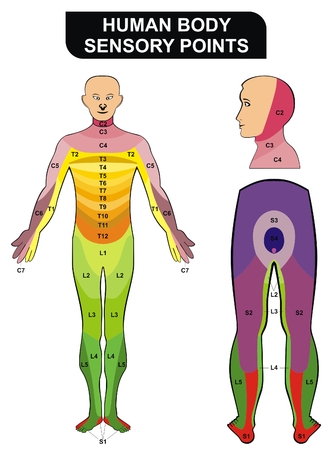Introduction to Sports Injuries in the UK
The United Kingdom boasts a vibrant sporting culture, from the bustling football pitches on weekend mornings to cricket greens and community running clubs. Whether it’s schoolchildren engaging in netball, seasoned rugby players, or casual Sunday cyclists, sports participation spans every age and background. With this widespread enthusiasm comes a notable prevalence of sports-related injuries affecting both elite athletes and amateurs alike. According to recent NHS data, thousands seek medical attention each year for sprains, strains, fractures, and other injuries sustained during physical activity. These injuries not only impact personal health and wellbeing but can also disrupt daily life and work. Understanding the most common types of sports injuries, their causes, and how they can be prevented is essential for anyone taking part in physical activities across the UK.
Typical Sports Injuries: Types and Causes
Sports injuries are an inevitable part of an active lifestyle, especially in the UK where football, rugby, cricket, and running are embedded in local culture. Understanding the most common injuries associated with these sports—along with their causes—is essential for prevention and effective management.
Common Injuries by Sport
| Sport | Frequent Injuries | Main Contributing Factors |
|---|---|---|
| Football | Ankle sprains, hamstring strains, knee ligament tears (e.g., ACL), groin pulls | Sudden changes in direction, tackles, overuse, poor pitch conditions |
| Rugby | Shoulder dislocations, concussions, knee injuries, fractures | High-impact collisions, scrummaging, tackles, lack of protective gear |
| Cricket | Finger fractures, rotator cuff injuries, side strains, stress fractures | Fast bowling action, repetitive throwing, impact from ball or bat |
| Running | Shin splints, Achilles tendinopathy, runner’s knee (patellofemoral pain), stress fractures | Poor footwear, overtraining, hard surfaces, biomechanical issues |
Mechanisms Behind These Injuries
Acute vs. Overuse Injuries:
- Acute injuries: Typically result from a single traumatic event (e.g., a tackle leading to a sprained ankle or a collision causing a fracture).
- Overuse injuries: Develop gradually due to repeated microtrauma (e.g., shin splints in runners or shoulder strains in cricketers).
The Role of Playing Surface and Weather Conditions
The UKs variable climate means wet and muddy pitches often contribute to slips and falls in football and rugby. Hard cricket outfields during dry spells can increase impact injuries among fielders and bowlers.
Cultural Considerations in Injury Patterns
The popularity of contact sports such as rugby and football increases the incidence of traumatic injuries compared to countries where non-contact sports dominate. Moreover, traditional amateur matches on weekends may see a higher rate of injury due to varying fitness levels and inconsistent warm-up routines.

3. Risk Factors and Vulnerable Populations
Within the UK context, understanding who is most at risk for sports injuries requires a close analysis of both demographic and environmental factors unique to British society.
Demographic Influences
Age and Activity Levels
Younger people, particularly those engaged in school or university-level sports, are often more susceptible to acute injuries like sprains, strains, and fractures due to developing bodies and sometimes overzealous participation. Conversely, older adults returning to activity after a period of inactivity may experience overuse injuries such as tendonitis or joint pain, especially if underlying conditions like osteoarthritis are present.
Gender Considerations
Research in the UK suggests that women may be more prone to certain types of injuries, such as anterior cruciate ligament (ACL) tears in football or netball, due to anatomical and hormonal factors. Men, meanwhile, often face higher rates of contact-related injuries in sports like rugby.
Environmental Factors
Climate and Playing Surfaces
The UK’s variable climate plays a significant role in injury risk. Wet and slippery pitches can increase the chance of falls and muscle strains, while hard, frozen grounds during winter can contribute to impact-related injuries. Additionally, urban areas with limited green spaces may encourage activities on harder surfaces, which can exacerbate stress on joints and soft tissues.
Access to Facilities and Equipment
Inequalities in access to high-quality training facilities and protective gear also affect vulnerability. For example, schools in less affluent areas may lack appropriate equipment or safe playing fields, increasing risk for their students.
Other Contributing Factors
Lifestyle Choices
Sedentary habits combined with occasional bursts of activity—a pattern not uncommon among working adults in the UK—can leave individuals unprepared physically, heightening injury risk when engaging in sport.
Conclusion
A nuanced understanding of these demographic and environmental influences is essential for designing targeted prevention strategies that resonate with diverse populations across the UK.
4. Prevention Strategies and Best Practices
Preventing sports injuries is not just about individual responsibility; it is also deeply rooted in the UK’s sporting culture, where community clubs, schools, and governing bodies all play a role. Whether you’re playing rugby on a muddy pitch or enjoying a five-a-side football match after work, adopting best practices can significantly reduce your risk of injury.
Practical Warm-Up and Cool-Down Routines
A structured warm-up is essential before engaging in any physical activity. In the UK, coaches commonly emphasise dynamic stretching and sport-specific drills to prepare muscles and joints. Cooling down with light activity and static stretching helps reduce muscle soreness and aids recovery.
| Warm-Up Activity | Duration | Purpose |
|---|---|---|
| Light Jogging | 5 mins | Increase heart rate & blood flow |
| Dynamic Stretches (e.g., lunges, arm circles) | 5-10 mins | Improve flexibility & joint mobility |
| Sport-Specific Drills | 5 mins | Prime muscles for activity |
| Cool-Down (walking, slow jogging) | 5 mins | Gradual recovery |
| Static Stretching | 5 mins | Reduce muscle stiffness |
The Importance of Proper Equipment Use
The correct use of equipment is fundamental across UK sports. For instance, football boots with appropriate studs prevent slips on wet grass, while mouthguards are mandatory in rugby to protect against dental injuries. Always ensure equipment meets British safety standards (BSI) and fits properly.
| Sport | Essential Equipment |
|---|---|
| Football (Soccer) | Moulded or studded boots, shin pads |
| Rugby | Mouthguard, headgear, suitable boots |
| Cricket | Pads, gloves, helmet, box (for men) |
| Cycling | Cycling helmet, high-visibility clothing |
| Tennis/Netball | Ankle support shoes with good grip |
Safe Training Approaches Relevant to UK Sports Culture
The UK places emphasis on gradual progression and training under qualified supervision. Avoid overtraining by following tailored schedules that allow for adequate rest—particularly during the unpredictable British weather which can impact outdoor conditions. Team coaches often monitor young athletes for early signs of fatigue or stress injuries.
Best Practice Checklist for Injury Prevention in UK Sports:
- Warm up thoroughly before every session or match.
- Wear sport-specific protective gear that meets UK standards.
- Adapt training intensity according to weather and pitch conditions.
- Follow guidance from qualified coaches or physiotherapists.
- Pace yourself—rest days are as important as active ones.
- If you notice pain or discomfort, seek advice early to avoid aggravation.
Summary
By integrating these prevention strategies into your routine—be it at your local club or in school PE lessons—you’ll minimise injury risk while embracing the social and competitive spirit that defines UK sport.
5. Treatment and Recovery Pathways
NHS vs Private Care: Accessing Support in the UK
When dealing with sports injuries in the UK, most individuals first engage with the NHS, especially for acute or emergency cases. The NHS provides initial assessments through GPs or A&E departments, followed by referrals to physiotherapy or orthopaedic specialists if needed. Waiting times can vary depending on severity and location, with non-urgent cases sometimes experiencing delays. For those seeking faster access or more tailored support, private healthcare options are available, including direct appointments with sports medicine consultants and quicker access to diagnostic imaging like MRI scans.
Rehabilitation Options: Tailoring Recovery
Rehabilitation is a critical component of recovery and is widely promoted both within the NHS and private sector. Typical rehabilitation pathways include physiotherapy (either in-person or via digital platforms), structured home exercise programmes, and—for more severe injuries—occupational therapy or hydrotherapy. Community-based sports injury clinics, often supported by local councils or universities, offer additional resources for amateur athletes. In recent years, there has been a growing emphasis on multidisciplinary approaches, involving nutritionists, strength and conditioning coaches, and mental health support to address the holistic needs of injured individuals.
Common Recovery Timelines
The time required to return to full activity varies significantly based on the type of injury:
- Ankle sprains: Mild cases may resolve in 2–4 weeks with rest and physiotherapy; severe sprains can take up to 12 weeks.
- Knee ligament injuries: MCL strains often require 6–8 weeks; ACL ruptures (following surgery) may need 6–12 months of progressive rehab before returning to sport.
- Muscle strains: Minor strains can heal in 1–3 weeks; more substantial tears might need 6–10 weeks with guided rehab.
Managing Expectations & Encouraging Adherence
A realistic understanding of recovery timelines is essential to prevent premature return to activity—which is a known risk factor for re-injury. Both NHS and private practitioners emphasise patient education and adherence to prescribed rehabilitation protocols. In the UK context, this often includes phased return-to-play guidance developed collaboratively between healthcare providers, coaches, and—where appropriate—workplaces or educational institutions.
6. Returning to Sport: Tips and Considerations
After experiencing a sports injury, the urge to return to your chosen activity can be strong—especially with the UK’s lively sporting culture from local football pitches to running clubs. However, coming back too soon or without proper preparation can risk re-injury or long-term setbacks. Here are some practical tips and UK-specific guidance for a safe and sustainable return to sport.
Follow Professional Advice
Always consult with a healthcare professional, such as a physiotherapist or GP, before resuming activity. The NHS recommends a gradual approach based on your specific injury and recovery progress. Professionals can help create a tailored rehabilitation plan, ensuring your return is both safe and effective.
Pace Yourself with Gradual Progression
Adopt the “little and often” mantra that is widely encouraged in British rehab settings. Start with low-impact exercises and slowly increase intensity under supervision. For example, if you’re recovering from an ankle sprain, begin with walking or gentle cycling before attempting running or more dynamic movements.
Listen to Your Body
Pain is a useful indicator—do not ignore it. Mild discomfort during rehab is common, but sharp pain or swelling means you may be pushing too hard. UK sports medicine experts frequently advise keeping a simple diary of symptoms and activities to track your progress honestly.
Reintegrate Sport-Specific Skills
Once basic movement feels comfortable, gradually reintroduce sport-specific drills. This might mean light passing drills for footballers or shadow swings for tennis players. Many community clubs across the UK offer “return to play” sessions guided by trained coaches familiar with local protocols.
Utilise Local Resources
The UK boasts excellent support networks including NHS physio departments, local leisure centres, and county-level sports injury clinics. Don’t hesitate to seek advice or group rehab sessions—many find the camaraderie helpful for motivation and accountability.
Prioritise Long-Term Health
Remember that sustainable recovery trumps short-term gains. Even after returning to full participation, continue strength work, flexibility routines, and warm-ups as recommended by UK governing bodies like Sport England or your specific sport’s organisation. Taking these steps can help prevent recurrence and keep you active for years to come.

